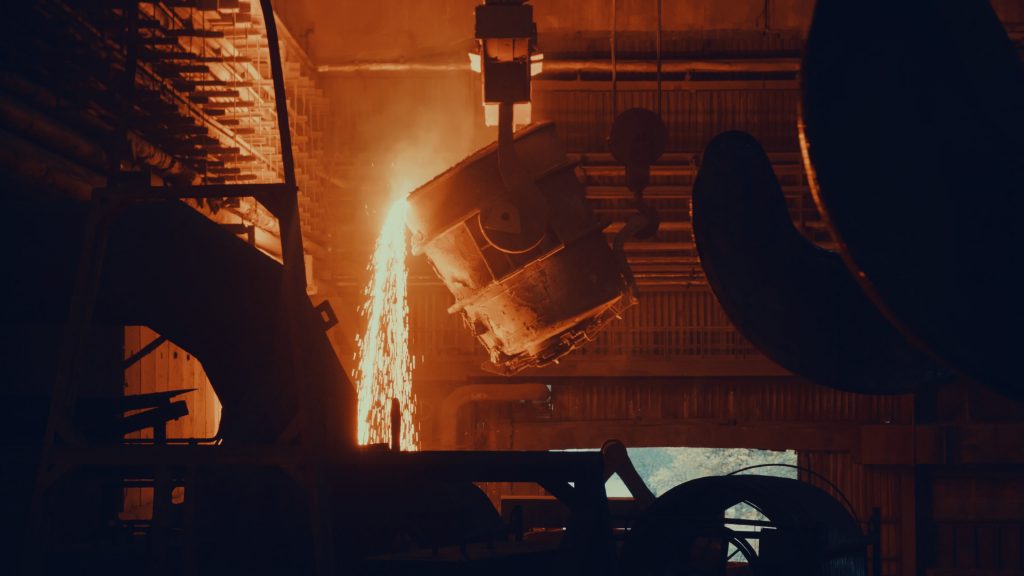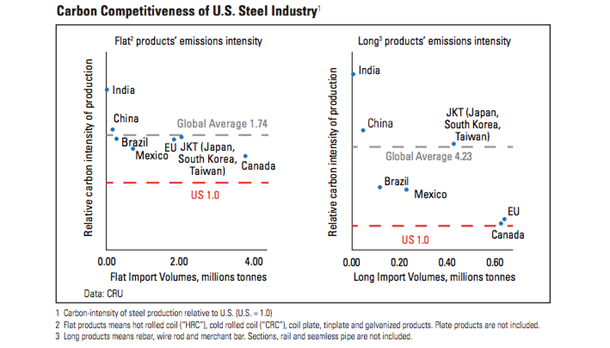
A New Climate Leadership Council study reveals the industry’s clean initiatives stand to benefit the economy and the environment.
A report released last week supports what we’ve been saying all along: The American steel industry’s recent push towards carbon efficiency is good for the environment and our economy.
The report, commissioned by the Climate Leadership Council (CLC), focuses on how CLC’s carbon dividends plan could impact the U.S. steel industry. “American industries are some of the world’s most carbon-efficient,” said CLC. “This plan will reinvigorate U.S. manufacturing.”
CLC’s report seems to confirm this assertion, especially when it comes to the steel industry.
As it stands right now, “the US steel industry has a major carbon advantage.” CLC’s report found that “the U.S. steel industry is 75% – 320% more carbon efficient than global producers,” including India, China, Mexico, and Brazil, “depending on the product segment.” This puts U.S. steel manufacturers at a competitive advantage.

But there is one issue: Under our current rules of climate and trade, American manufacturers get basically zero credit for their cleaner operations. Unfair trade practices and lower environmental standards abroad effectively eliminate America’s competitive advantage.
This is where CLC’s carbon dividends plan comes in. “A carbon fee and border adjustment would unlock a competitive advantage for the U.S. steel industry,” it writes. The proposed carbon fee, according to CLC, would be imposed on fossil fuel companies’ carbon emissions, while the carbon border adjustment would tack on a similar fee to imports.
“With a policy to account for carbon emissions, more efficient U.S. steel supplies a greater share of the U.S. market,” said CLC. That translates into cold hard gains for U.S. industries. “By applying the same carbon fee on domestic steel as the more carbon-intensive imports, U.S. steel sales increase by between 7–9%.,” the report finds.
In addition to that, “steel [imports] from some of the least carbon efficient markets, like China and Brazil, are further reduced or pushed out of the U.S. market altogether” under CLC’s plan. In other words, U.S. steel’s competitive advantage is restored.
With American steel taking up more of the market share, “steel production increases in all major steel regions: the Great Lakes, the South and the West.” That not only means more good-paying jobs, and higher quality steel, it also means that “all regions see economic output grow.”
To break it down by each region, CLC’s report found that the Great Lakes region stands to gain $958 million. The South Atlantic region could gain as much as $421 million. Similarly, the Northeast region could gain $78 million, $971 million in the South Central region, and $433 million in the West and Other Midwest regions.

That is billions of dollars, just in U.S. steel industry gains alone.
But why stop there? “Compared to the rest of the world and our largest trading partners, America has a decisive carbon advantage throughout the economy,” said CLC. In fact, “goods manufactured in the U.S. are 80% more carbon-efficient than the world average.”
The U.S. holds a carbon advantage over some of our top competitors in sectors such as chemicals and pharmaceuticals, electrical equipment, rubber and plastic products, as well as motor vehicles and trailers — just to name a few.
The issue is, as it stands right now, “75% of U.S. imports come from less carbon efficient countries.” We are importing pollution.
Fortunately, policies, like those proposed by CLC and some states’ Buy Clean initiatives, offer a solution. These policies are crucial, not only to address the climate crisis, but also to ensure that U.S. industries remain competitive.
U.S. Steel’s verdeX production line and their 20% by 2030 commitment show just how ambitious industry leaders are about making change. And while we have always seen these initiatives as beneficial to the environment, CLC’s report proves that they can be beneficial to the economy as well.
The simple fact is that the American steel industry offers a cleaner option than any other alternative on the market. With the right policies, the U.S. can finally close the carbon loopholes that have plagued the industry for years. Here, promoting domestic manufacturing and addressing climate change is not only the right thing to do, it’s the smart thing too.
